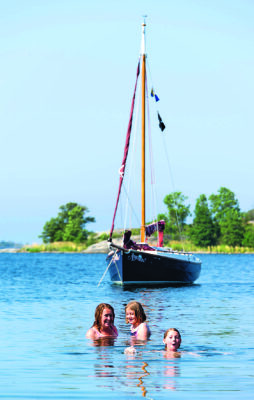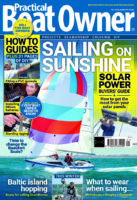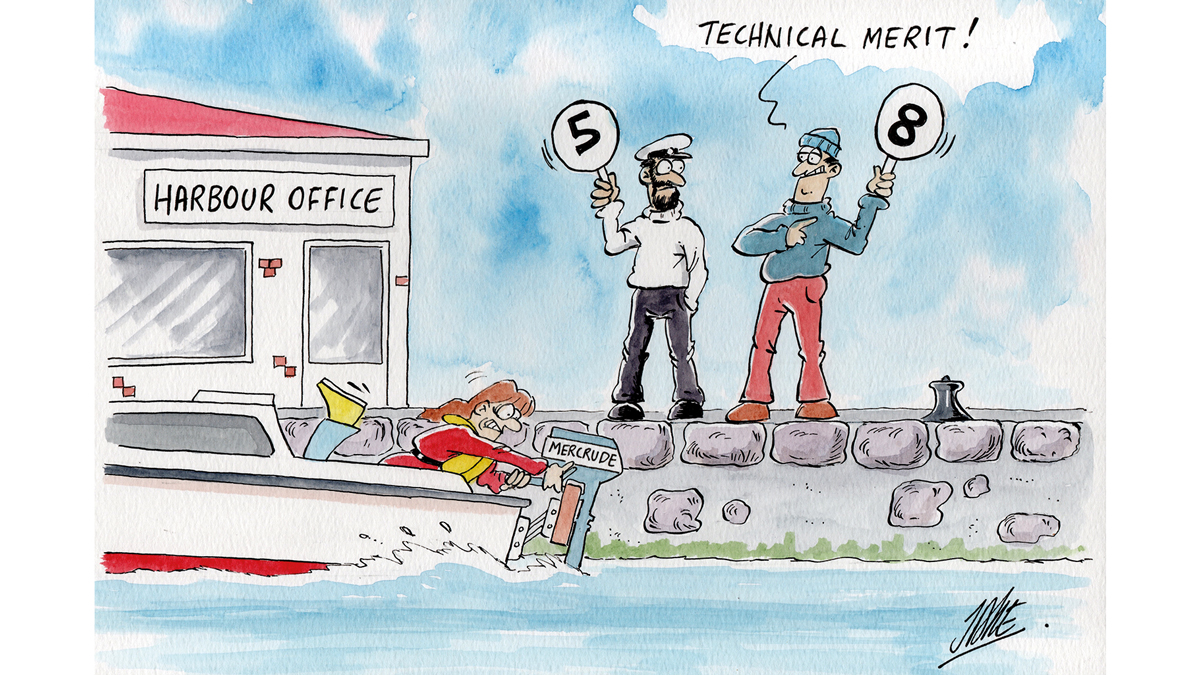Charles Erb takes his family and their Cape Cutter 19 on a trailer-sailer cruise in the Baltic.
Ever been on a trailer-sailer cruise? Charles Erb shares his story.
The Baltic Sea is well suited to a small yacht. There are many beautiful islands close together and whatever the wind direction, you can find shelter.
Our boat, Aurora, is a Cape Cutter 19 and her sail plan can be adapted to a range of conditions. While not exactly luxurious, the custom-made galley with its meths stove meets all our catering needs, and with a bit of pioneering spirit, the four of us have enjoyed many an adventurous trailer-sailer cruise.
Aurora is fitted with basic instrumentation and the electrics are powered by a deep-cycle battery, which we keep topped up with a pair of 30W solar panels. We have a very economical 5hp outboard and 20l fuel tank, which we supplement with two 5l petrol cans.
The Baltic climate is such that the sailing season is short, and boats must be recovered at the end of the season. There are fewer marinas than in the UK but lots of boatyards will crane in and out. There are also free public slipways.
The Stockholm archipelago has no tides or currents to worry about, but there are a fearsome number of rocks. Though quite intimidating at first, this terrain is part of the attraction. With a small shallow-draught boat, you can get in close to the islands and the electronic charting is very detailed.
We used a tablet to navigate between the rocks once outside of the main channels.
The islands are fringed with steep-sided flat rocks which, coupled with the lack of tides, means it’s possible to moor almost touching the rock. This technique involves dropping a stern anchor, motoring toward the rock, securing the bow with lines ashore and then pulling the lines tight by taking in the anchor warp. Many natural harbours have rings or spikes, which makes mooring easy. In locations without permanent fittings, I found rocks or trees to which I could secure.

Enjoying the warm Baltic Sea in the Stockholm archipelago. Photo: Charles Erb.
Baltic yachts are designed to be boarded via the bow, which can even overhang the rock. Aurora has a bowsprit, which served the same purpose. I carried a good selection of long warps, and often had to double-up. Larger yachts usually carry a stern anchor but Aurora has no room for this, so I moved the bow anchor to the stern.
Few and far between, shops open from May until early August so we brought as much long-life food as we could, and stocked up whenever possible. We were lucky enough to catch some fish too. We washed ourselves and the dishes in seawater (much less salty than at home) and reserved fresh water for drinking and cooking. Many islands have public wells, which we used to keep supplies topped up.
We cooked most meals with a thermal cooker (a type of modern hay box), which comprises two nesting saucepans and a well-insulated case. Once food is partially cooked, and the pan is safely clipped into the case, it continues cooking over the next few hours. I also made bread in the thermal cooker using pre-weighed bags of dry ingredients. What a luxury to wake up to warm, fresh bread in the morning!
A trailer-sailer cruise is a wonderful way to explore on a budget. I only discovered sailing a decade ago, and living in the Midlands means a trailer-sailer cruises have opened up experiences such as this at a fraction of the cost of chartering.
The best trailer sailer boats for weekend cruising… or longer
Duncan Kent reviews a selection of new and used trailer sailer boats that are large enough to accommodate crew for…
How to launch a trailer sailer (and the key mistakes to avoid)
George was helping to launch his friend’s boat and asked if Paul and I could give them a hand. My…
Trailer-sailing? Tow your boat safely
Simple stop and check technique
Want to read more articles like this one on trailer-sailer cruises?

A subscription to Practical Boat Owner magazine costs around 40% less than the cover price.
Print and digital editions are available through Magazines Direct – where you can also find the latest deals.
PBO is packed with information to help you get the most from boat ownership – whether sail or power.
-
-
-
- Take your DIY skills to the next level with trusted advice on boat maintenance and repairs
- Impartial, in-depth gear reviews
- Practical cruising tips for making the most of your time afloat
-
-
Follow us on Facebook, Instagram, TikTok and Twitter







